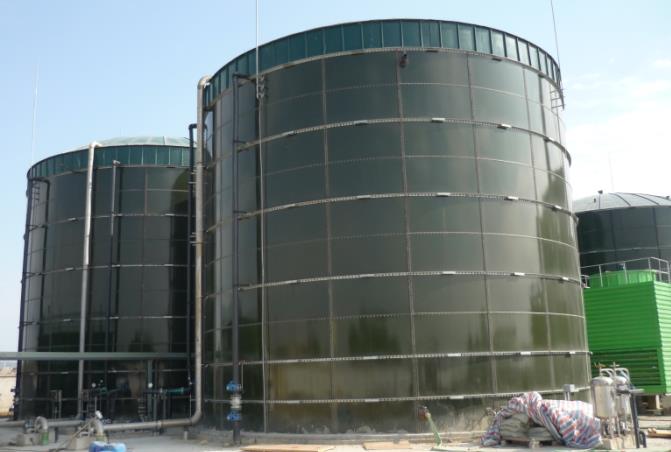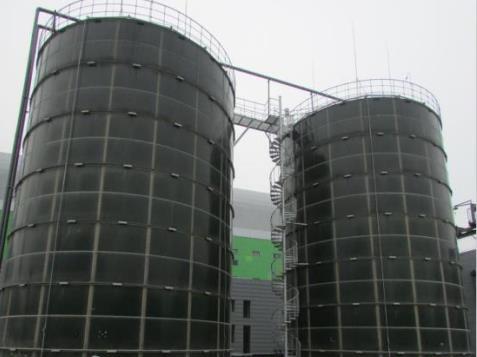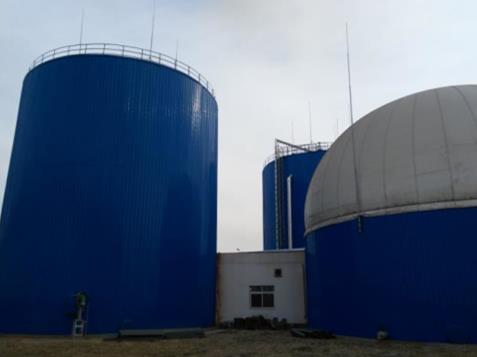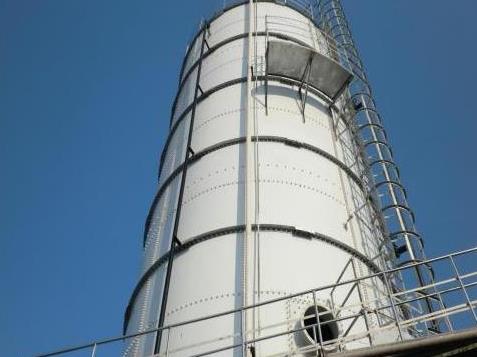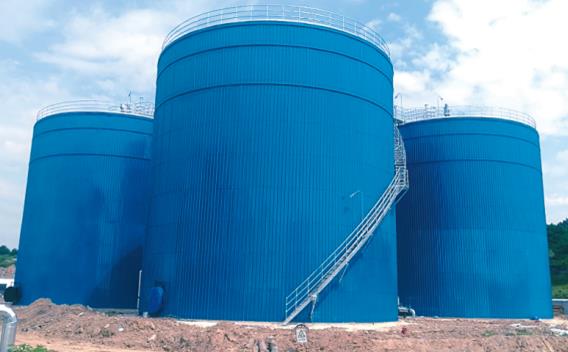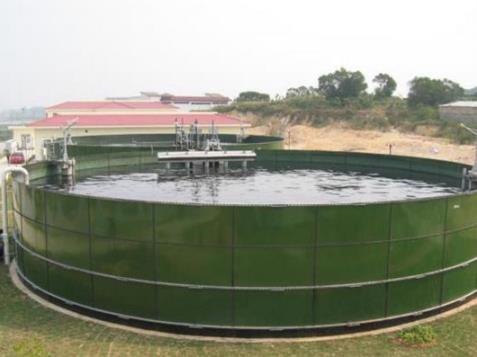bio digester tank
2019-08-23 07:58:20 By:NVirotech Bolted Tank (2736)
bio digester tank history
bio digester tank , usually refers to anaerobic biological treatment of sludge produced in wastewater treatment. It plays the role of precipitating impurities.
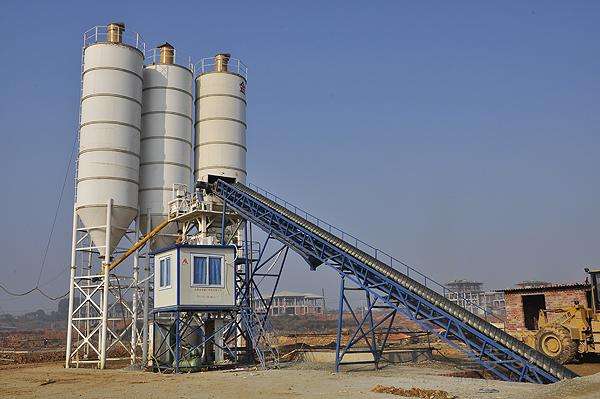
bio digester tank is a kind of sludge in which the organic matter in the sludge is degraded into methane-based sludge gas and stable sludge (called digestive sludge) by bacteria under anaerobic conditions.
But there are also aerobic biological treatment to degrade and stabilize the organic matter in the sludge, called aerobic digestion, often used to treat excess activated sludge, aeration time varies with temperature, 20 C takes about 10 days, 10 C takes about 15 days, aerobic digestion of excess sludge is not easy to concentrate.
bio digester tank treatment is a kind of wastewater treatment method which utilizes microorganisms in natural environment to oxidize and decompose organic and inorganic poisons (such as cyanide and sulfide) in wastewater and convert them into stable and harmless inorganic substances. Sewage biological treatment is an artificial intensification technology based on environmental self-purification.
Its significance lies in creating a favorable environment for microbial growth and reproduction, enhancing the metabolic function of microorganisms, promoting the proliferation of microorganisms, accelerating the inorganization of organic matter, and promoting the purification process of sewage.
This method has the advantages of low investment, good effect and low operating cost, and is widely used in the treatment of urban and industrial wastewater.
Biological treatment is mainly to change the wastewater quality to meet the discharge standards through biological, especially microbial enrichment, transformation, degradation and other physiological and biochemical characteristics of toxic substances in wastewater.
Waste water discharged into rivers without treatment will gradually become clear and odor will disappear after a certain distance. This phenomenon is the natural purification of water bodies.
Microorganisms in the water play a role in cleaning up sewage. They use organic pollutants in the water as their own nutrient food. Through the process of adsorption, absorption, oxidation and decomposition, the organic matter is transformed into simple inorganic matter, which not only meets the needs of microorganism's reproduction and life activities, but also purifies the sewage. Microorganisms such as fungi, algae and protozoa are cultured in sewage.
It has strong ability to adsorb, oxidize and decompose organic pollutants. They have different requirements for oxygen in the process of waste treatment, so biochemical treatment can be divided into aerobic treatment and anaerobic treatment.
Aerobic treatment is aerobic treatment, anaerobic treatment is carried out under anaerobic conditions. bio digester tank treatment is one of the most widely used and effective methods for wastewater treatment, especially for organic wastewater treatment.
bio digester tank method
There are many kinds of anaerobic digestion processes. Anaerobic digestion can be divided into artificial digestion and natural digestion. In artificial digestion, according to the structure of the tank cover, it can be divided into fixed volume (fixed cover) digestion tank and dynamic capacity (floating cover) digestion tank.
It can be divided into small digestion tank (1500-2500 m3), medium digestion tank (2500-5000 m3) and large digestion tank (5000-10000 m3). According to the different digestion temperature, it can be divided into three forms:
low temperature digestion (below 20), medium temperature digestion (30 ~ 36) and high temperature digestion (45 ~ 55). According to the efficiency of digestion pool, it can be divided into routine digestion and high efficiency digestion.
Primary digestion refers to the complete process of digestion in a digestion unit. There is no stirring equipment in the digestion tank, so the sludge in the tank is stratified. Only a part of the tank volume plays a role in decomposing organic matter. The bottom volume of the tank is mainly used for storing and thickening mature sludge.
Because microorganisms can not fully contact with organic matter, the digestion rate is very low and the digestion time is very long, generally 30-60 days. Therefore, the primary digestion process is only suitable for small devices.
There is no heating and stirring device in the second digestion tank. The sludge is digested by the waste heat from the first digestion tank. The digestion temperature is 20-26 C.
The gas production accounts for about 20% of the total gas production. The second digestion tank can be collected or not. Because of no stirring, the second digestion tank has the function of concentration. Secondary digestion is the improvement of primary digestion.
The biogas produced in the first 8 days of medium temperature digestion accounts for about 80% of the total gas production. In primary digestion, the decomposition degree of organic matter digested by sludge at medium temperature is 45%-55%.
The digested sludge will continue to decompose after being discharged into the drying plant, resulting in sludge gas escaping from the atmosphere and polluting the environment. Loss of heat, and two level digestion can solve this problem well. Therefore, it is reasonable to adopt two stage digestion.
-
Related News:
- bolted storage tank
- fire suppression for Water storage tanks
- bolted tank design code
- anaerobic digestion wastewater treatmen
- enamel assembled tank related knowledge
- super tuff bio gas tank

